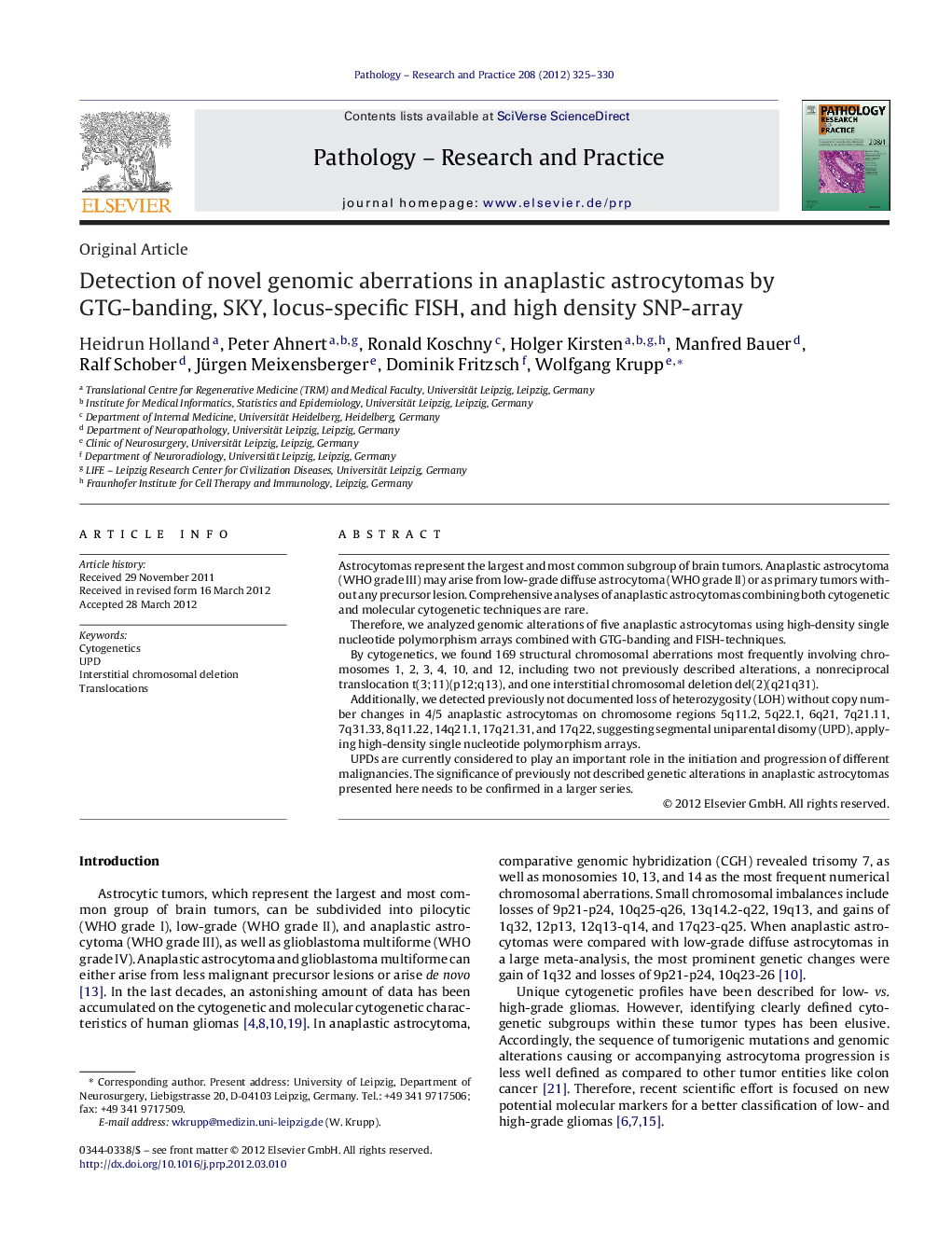| Article ID | Journal | Published Year | Pages | File Type |
|---|---|---|---|---|
| 2155936 | Pathology - Research and Practice | 2012 | 6 Pages |
Astrocytomas represent the largest and most common subgroup of brain tumors. Anaplastic astrocytoma (WHO grade III) may arise from low-grade diffuse astrocytoma (WHO grade II) or as primary tumors without any precursor lesion. Comprehensive analyses of anaplastic astrocytomas combining both cytogenetic and molecular cytogenetic techniques are rare.Therefore, we analyzed genomic alterations of five anaplastic astrocytomas using high-density single nucleotide polymorphism arrays combined with GTG-banding and FISH-techniques.By cytogenetics, we found 169 structural chromosomal aberrations most frequently involving chromosomes 1, 2, 3, 4, 10, and 12, including two not previously described alterations, a nonreciprocal translocation t(3;11)(p12;q13), and one interstitial chromosomal deletion del(2)(q21q31).Additionally, we detected previously not documented loss of heterozygosity (LOH) without copy number changes in 4/5 anaplastic astrocytomas on chromosome regions 5q11.2, 5q22.1, 6q21, 7q21.11, 7q31.33, 8q11.22, 14q21.1, 17q21.31, and 17q22, suggesting segmental uniparental disomy (UPD), applying high-density single nucleotide polymorphi
